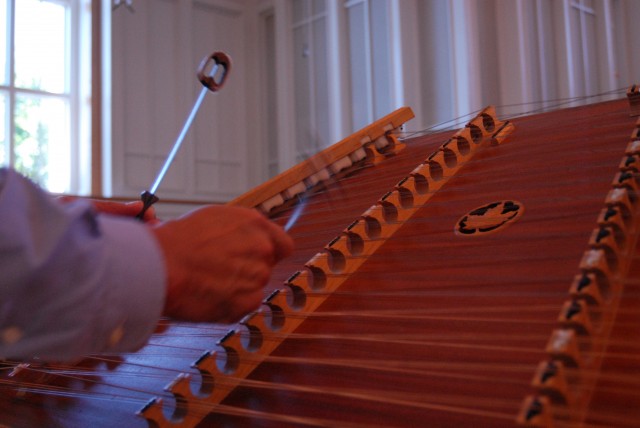Continuing the list of ideas for arranging a melody, here are six techniques you can mix and match to fill out and color and personalize a piece! Sometimes I stick to just one technique for an entire arrangement, and sometimes I use many of them in a very complex (but fun) pattern of uses, and most are a combination somewhere in the middle of the spectrum of complexity.
7. Arpeggio chords -- chords suggested between melody notes by adding notes that complement the melody, resembling the effect of a fingerpicked guitar.
8. Chord rolls -- quickly playing two or more chord notes leading into a melody note (usually best played in the shape of a triangle; and the commonest chords skip two or three scale steps between notes). This resembles the sound of a strummed guitar or a piano’s chord roll. E.g., if the melody note is G, play B-D-G to get a G chord or C-E-G to get a C chord. Then we can add the note an octave lower than the melody note to get a four-note zig-zag chord that sounds great! (See my upcoming blog entry on chord rolls for ‘All Through the Night’ for some specific ideas.)
9. Vary the melody -- doing your own variation, perhaps by inserting running notes between the usual melody notes, or by replacing a melody note with the one above or below it if you like the sound. There are lots of other techniques for doing this too --- one of my favorite things to do!
10. Chord changes -- enriching a tune by changing from or adding to the chords people usually play for it -- e.g., if the chord is G (G-B-D) you may try E minor (E-G-B) or E minor 7 (E-G-B-D), both small changes that make a big difference in the tone of the piece. (See my upcoming blog entries outlining these options for each of the seven scale steps.) But you don’t have to know chord theory to do these changes --- just knowing that the options are there frees you up to experiment and find sounds that you like!
11. Flams -- striking a course on the right side of the treble bridge at a rightward-glancing slant (like you’re slicing with the hammer) so the hammer bounces to immediately strike a bass course -- like skipping a rock. This has an effect that is a variation of the chord roll: the two notes before the melody note go downward in motion rather than upward. Often, if the melody note is on the left of the treble bridge, a flam fits well on the pair of courses just below it to the right. This is not as hard as it sounds! (In a way it’s also like a double grace note in effect --- see #15 in the next post.)
12. Simultaneous octaves -- slow melodies played in the high octave with the left hand and the low octave with the right hand at the same time. At any point a single note an octave above or below the melody note is also a brilliant effect.
I hope these help broaden your repertoire’s diversity, or at least jog your memory of things you’ve done in the past. Have at it!
Look for a third post of ideas in the next post, which should arrive soon.





Comments